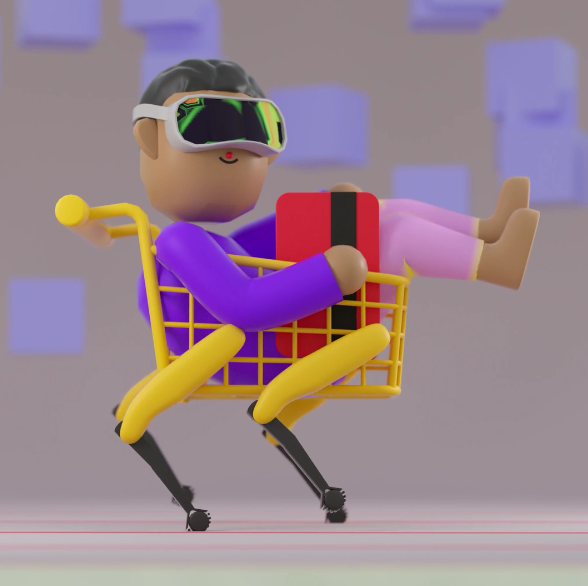Doing product research, making grocery lists and booking travel can be easier with tools like ChatGPT.
Published: June 16, 2023
Writers: Brian X. Chen
Last week, I walked you through how to use A.I. to prepare for the dreaded office meeting. Now let’s take the money you’ve earned from all that hard work and move on to something more fun: shopping.
The most time-consuming part of shopping for many is the research process: poring through review sites and plucking out the item that’s right for you, whether it’s coffee equipment or a hotel room that is both convenient and affordable.
I’ll cover what A.I. can do to help make informed purchasing decisions quickly and efficiently. For this exercise, I’ll focus on using chatbots, including Microsoft’s Bing, Google’s Bard and OpenAI’s ChatGPT to do product research. I’ll also explore how to use ChatGPT plug-ins, a more recent development, for creating grocery lists and planning travel.
Product research
The typical research process is to do a web search and read a bunch of reviews. A.I. chatbots can streamline this process. Microsoft’s Bing and Google’s Bard, which are hooked up to search engines by default, are currently the best equipped for getting up-to-date product recommendations.
As is always the case, the right prompt will get the best results. For this example, you would type something like: “Act as a shopping assistant. I am looking for a coffee bean grinder for French press that is well reviewed. It should cost no more than $200.” In response, Bing and Bard will list examples of grinders that fit the criteria.
You can also ask the chatbots tougher questions, like which household appliances will be long lasting. You could type something like, “Act as a shopping assistant. I am looking for a refrigerator. Which brands have the highest reliability rating and what are some well reviewed refrigerators from them?”
The bots will tell you which appliances have the highest reliability ratings from publications like Consumer Reports and The Times’s own Wirecutter.
Whenever you’re using a chatbot, it’s a good idea to check the results for accuracy. But doing a web search to double check the bots’ recommendations is a whole lot faster than manually searching from scratch.
Grocery shopping
Now let’s talk about the future. OpenAI is developing a plug-in platform, which is essentially a third-party app store that allows you to add capabilities to ChatGPT. Currently only subscribers who pay $20 a month for ChatGPT Plus can use plug-ins, including the ones for web browsing and shopping.
To use plug-ins if you’re a paying subscriber, go to the ChatGPT settings menu, click “beta features,” and turn on “plugins.” Then, in the ChatGPT app or website, go to the GPT-4 tab and click “plugins.” Then click on the downward arrow and select the plugin store. This is where you can search for apps. Let’s start with one for the grocery delivery app, Instacart.
Try typing a prompt like, “I am making pasta Bolognese. What’s a good recipe and what are the ingredients?” The chatbot will list the ingredients that go into the dish and offer to generate a shopping list.
Clicking on the shopping list will bring you to Instacart, where you can automatically load all the items into your cart and choose a grocery store to purchase them from.
If you don’t want to pay for ChatGPT Plus, you can still use A.I. for grocery shopping. Try asking Bing for a recipe, then ask it for the shopping list of required ingredients. In one particularly neat trick, you can even ask it to organize your shopping list by grocery store aisle.
Travel planning
There are also plug-ins from travel sites like Kayak and Expedia that help with trip planning. For example, you may be looking for a well-rated hotel within walking distance of tourism sites for up to $500 a night — a process that would typically require wading through reviews and
You can also use the Expedia plug-in to search for flights. For example, “I am trying to fly to Milan, Italy from San Francisco on July 28. What are my best options with short layovers?” ChatGPT will then load Expedia’s results for the shortest flights. It returned three flights from KLM, Delta and United, all with single layovers for no more than two hours. (I tried the same prompts with Bard and Bing, which showed generic information and inaccurate ticket prices — not helpful!)
Commentary
This is the part of new technology that has recently rattled the public eye. AI being used for simple tasks can be exciting yet frightening. Should we be giving so much information to a computer program? How else can AI help us? I think this notion of using AI for grocery shopping is an interesting application of the technology. It is a way for the everyday person to use this complicated, cutting edge technology for the small tasks, like grocery shopping. I think it will eventually become important to integrate AI into the process of buying groceries. So, as designers, how can we create a user friendly way for AI to integrated into simple tasks like grocery shopping? How can engineers and designers come together to give users the best experience with emerging AI technologies?




